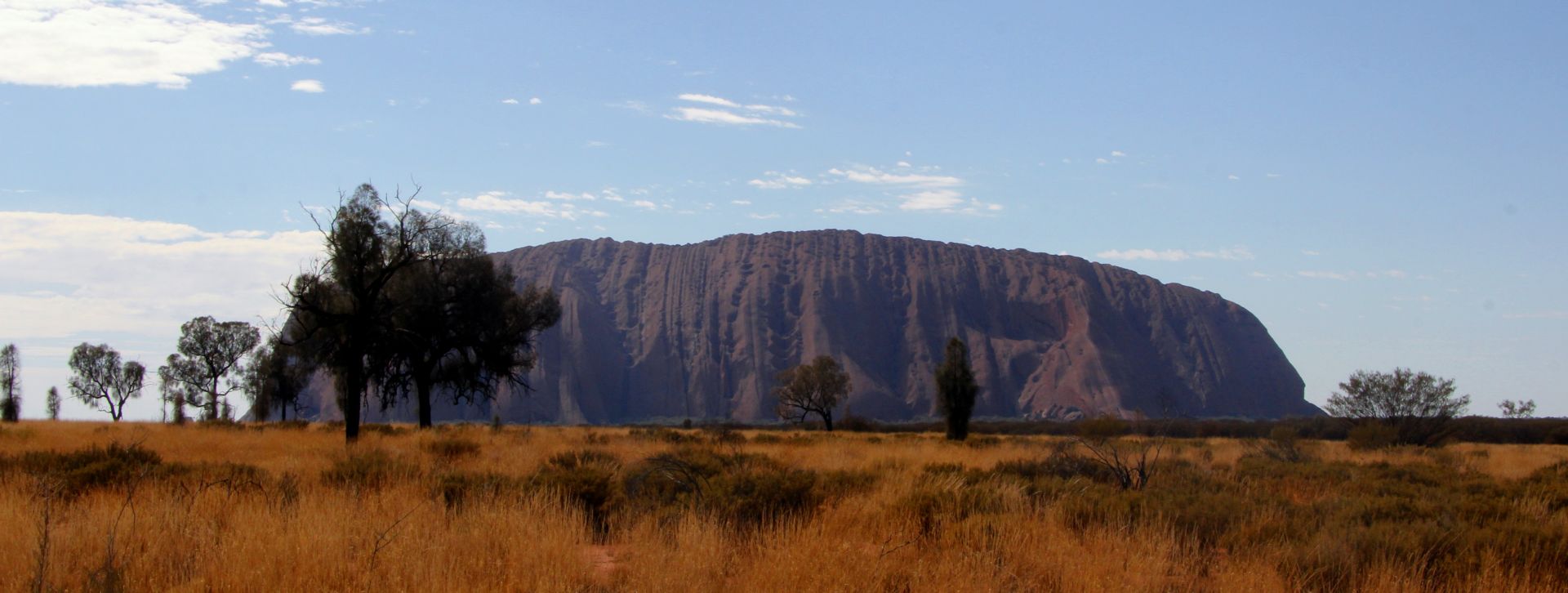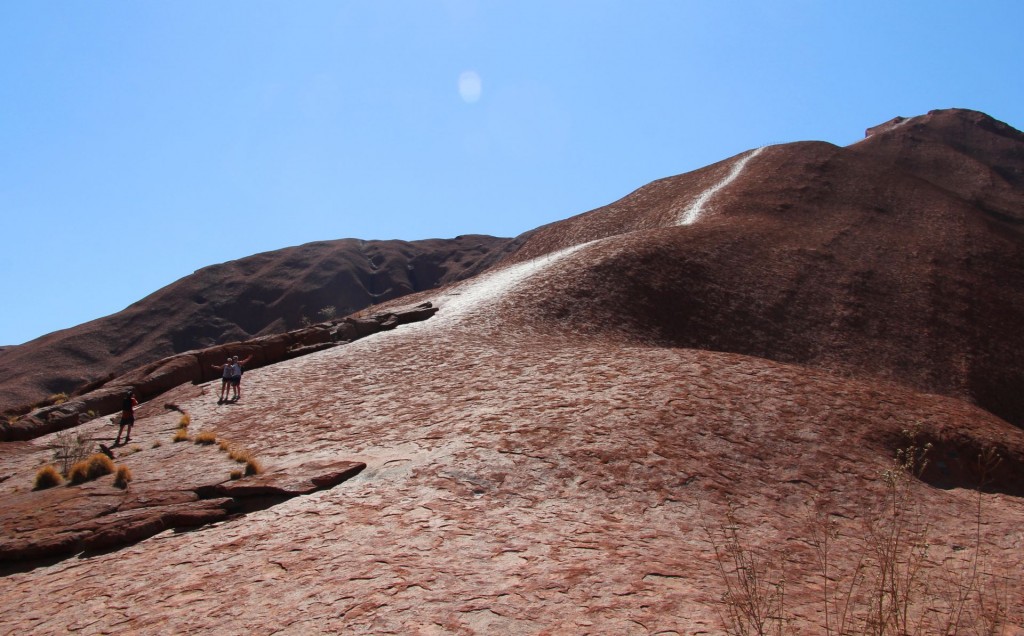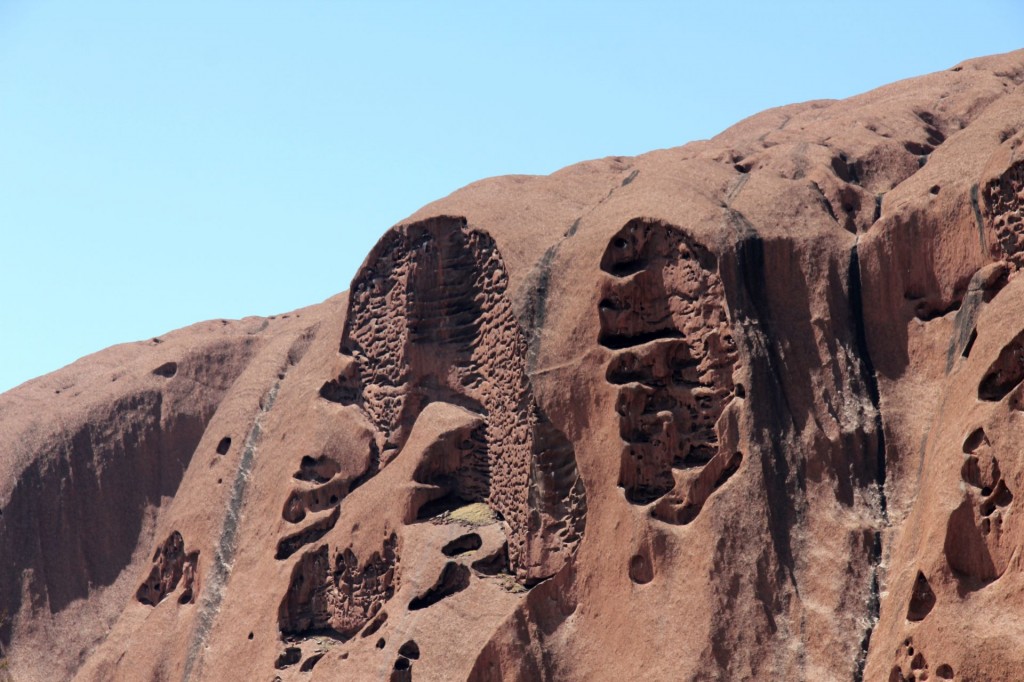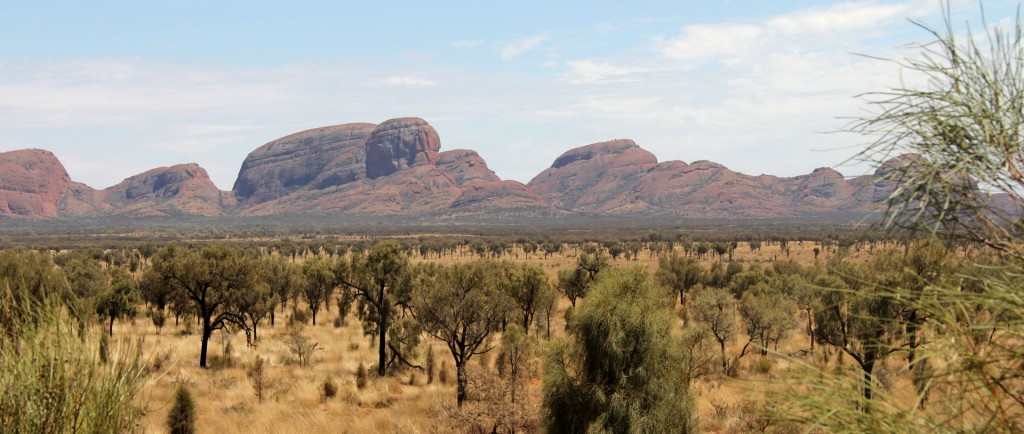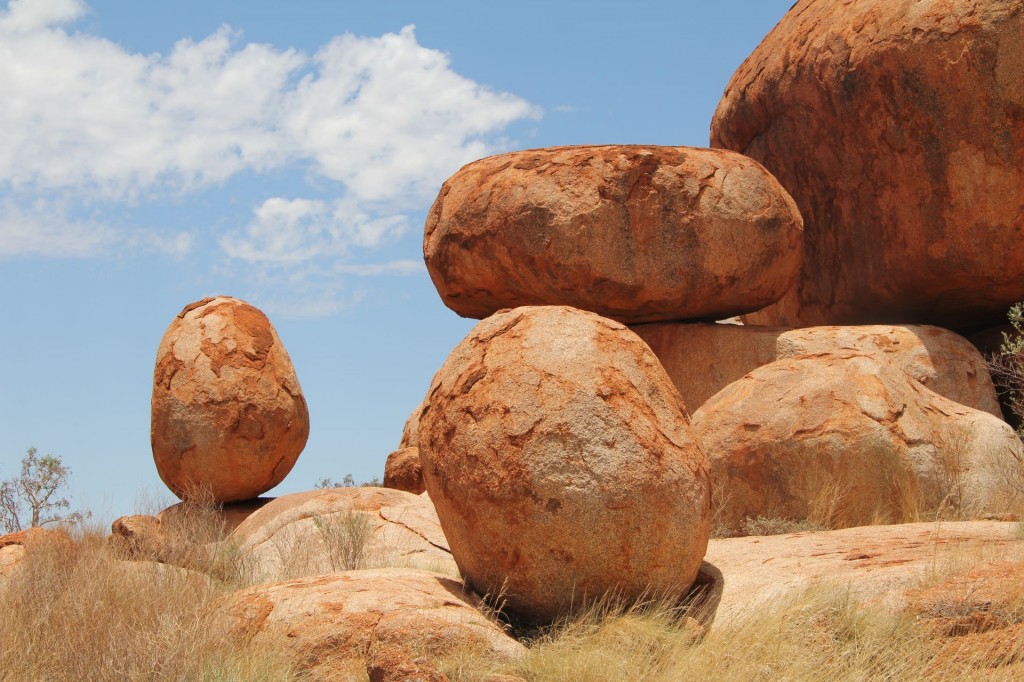Visiting Uluru (Ayers Rock) and Kata Tjuta (the Olgas) is a must when you travel to Australia. These Aboriginal sacred sites have become the symbol of the Red Centre and more than 400,000 tourists p.a. visit these attractions that are also listed on the UNESCO World Heritage List. Uluru rises 348 m from the desert and has a girth of 9.4 km. These statistics alone assure its star role as the world’s most famous monolith, although it is estimated that at least two-thirds of the rock lies beneath the surface.
After a long two-day drive by camper from Adelaide through the hot and arid “outback”, we arrived in the Ayers Rock Resort. The cultural shock was complete, as we found ourselves in an enormous modern tourist settlement, which was built to accommodate all those tourists who want to see Ayers Rock, if possible at sunset or sunrise when the red color is exceptional.
Although this is a sacred place for the Aboriginal Anangu tribe – who kindly ask the visitors not to climb the rock – it seems to be a special challenge for many people to climb Uluru with the support of a long chain. It is a dangerous undertaking and many people have died by a fall or a heart attack while climbing the slippery red rock. Nowadays it is forbidden to climb when the temperature is above 36°C. However, when we visited the place there were several people on the rock, although the temperature was close to 40°C.
As we did not like the organized sunset viewing (tourists are transported by bus to special viewing points), we explored the area on our own. We made a tour around the rock and it was fascinating to see the colors change with the sunlight. We could see many strange deep caves and holes in the red walls and it was not difficult to understand the exceptional spiritual meaning of this place for the Aboriginal population.
Next day we travelled to the east of Uluru, where we saw the huge domes of Kata Tjuta rising out of the sand. Kata Tjuta is the Aboriginal name for the Olga’s and means “many heads”. There are 36 separate domes and the tallest is in fact 200 m higher than Uluru. It is an impressive and mystic place and it is often visited by hikers, who can undertake various splendid hiking tours in the surroundings.
Continuing our trip to the north, we visited another sacred site of the Aboriginal population, which is much less known: the “Devils Marbles” (Karlu Karlu) are situated between Alice Springs and Tennant Creek. It is a collection of huge, red, rounded granite boulders, varying in size from 50 cm up to six meters across and strewn across a large area. Many of them seem impossibly balanced on top of each other.
In the Aboriginal mythology the Devils Marbles are the eggs of the rainbow serpent, and many “dreamtime” stories and traditions of the Aboriginal people are linked with this area. The traditional Aboriginal owners of the area regard the marbles as having extraordinary powers. Damage to them can have life threatening consequences for their custodians.
The Aboriginals have several cultural centres in the cities of Australia, where interested tourists can find more information about their history and culture, especially the so-called “dreamtime”, which is certainly very interesting and mainly unknown in Europe.
